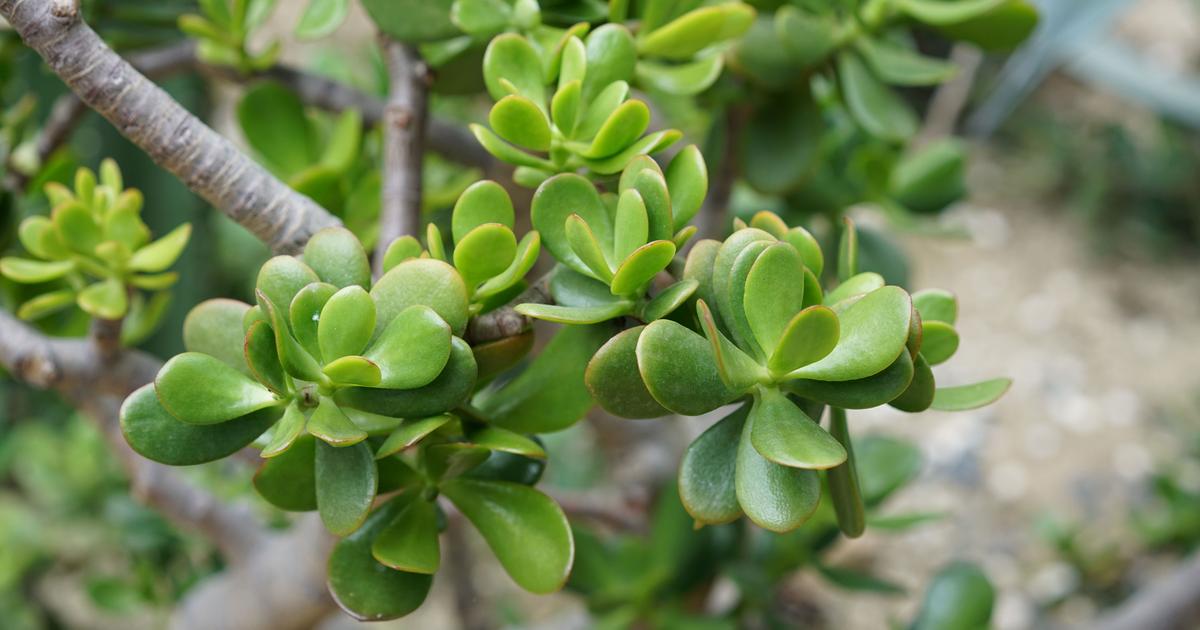The Jade tree,
from the Crassulaceae family, is a perennial plant with foliage that is both evergreen and fleshy. Discover our tips for making it look its best both outdoors and indoors.
Where and when to plant a Jade tree?
In a pot or outdoors, the Jade tree, to become a small, erect and branched tree, needs soil that is both well-drained and light, with a pH oscillating between neutral and acidic, or even poor.
Indoors, all year round, in a room with a dry atmosphere, you can place clay balls in a large pot at the bottom of the pot before pouring in special succulent or cacti potting soil.
Outdoors, in a mild climate, you can add gravel and sand to facilitate drainage and make the soil less compact. For a surer result, it is best to wait until spring arrives and the periods of frost or holy ice have ended. It is most often planted on rockeries.
After planting, simply pack the soil for a uniform result, then water moderately at the base. Associated with a non-direct sunny exposure or in partial shade, it will ensure winter flowering with small white or pink flowers in stars in corymbs then with fruits in the form of follicles.
Good to know
The Jade tree is a small rustic bush that can tolerate a temperature of -2°C in winter.
How to water and maintain the Jade tree?
The Jade tree is easy to maintain because it requires very little, due to its leaves which conserve water.
In fact, as a succulent, moderate watering in pots is only necessary approximately once every ten days between spring and autumn and once a month in winter. As for the exterior, watering is not obligatory, except during periods of drought lasting several days.
A lack or excess of water can also appear. In the first case, the leaves lose tone. In the second, they fall. In any case, to avoid excess water, it is preferable to wait until the substrate is completely dry between two waterings.
Good to know
Clear water or rainwater, at room temperature, is preferred over tap water.
What are the main varieties?
There are currently 300 species of Crassula on the planet. Among the most common, we find:
Crassula
ovata Hobbit
: foliage rolled up on itself in the shape of a cylinder and a slightly pink or red edge in the sun
Crassula
ovata Gollum
: short, round leaves rolled up on themselves forming a crooked whole
Crassula
ovata Obliqua:
elongated and ovoid leaves
Crassula
ovata Minor
has a compact appearance and leaves with red reflections when exposed to sunlight
Crassula
rupestris
: white or pink flowers among light green foliage with a geometric shape and stacked with a red border
Crassula
muscosa
: a bushy habit and about twenty centimeters high with leaves with brown or yellow reflections.
What are the diseases of a Jade tree?
Crassulas are resistant to various parasites and diseases. However, in case of excess humidity, the Jade tree may be confronted with the presence of rot or mealybugs.
Aphids can also invade the plant. The remedy to remove these unwanted guests is a treatment based on water and black soap or vegetable oil sprayed about once a week until they disappear completely.

